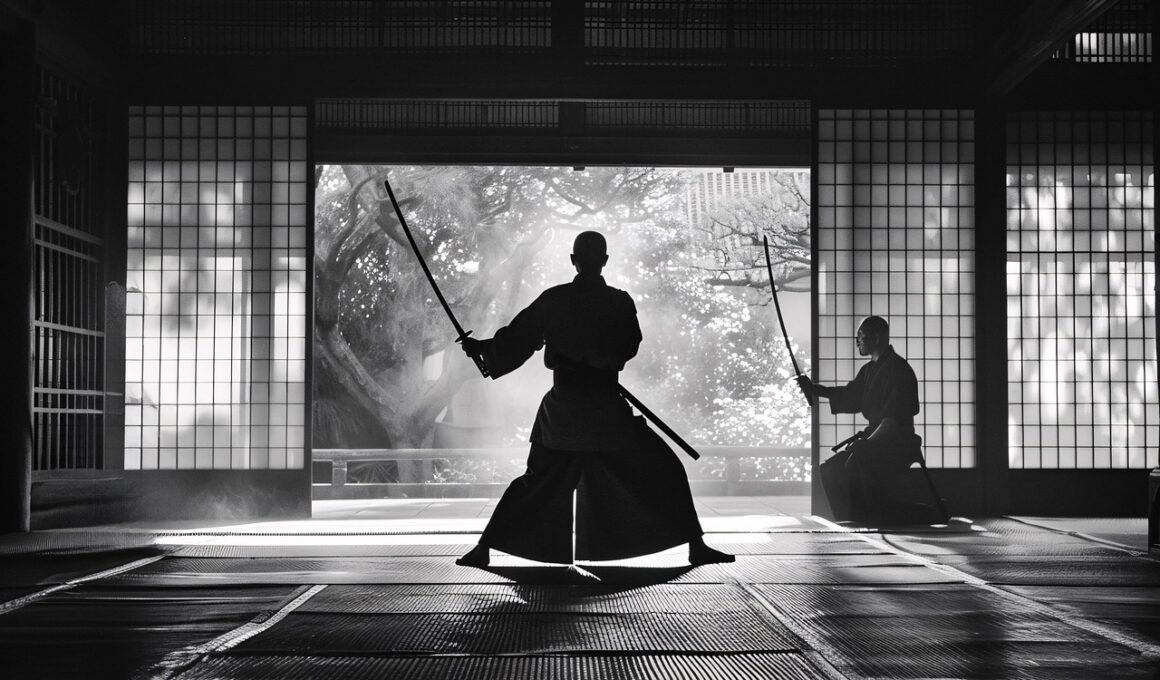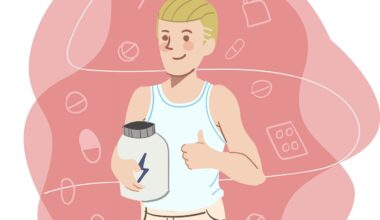Advanced Functional Training Methods for Elite Martial Artists
Elite martial artists rely on advanced functional training methods that encompass a variety of dynamic exercises, which not only enhance their strength but also improve their overall agility and coordination. These methods integrate movements that mimic the complexities of combat scenarios. Key elements include resistance training, plyometrics, and sport-specific movements, forming a training regimen that emphasizes functional fitness. In particular, exercises such as kettlebell swings, medicine ball slams, and agility ladder drills are pivotal. They develop explosive power suitable for strikes and evasive maneuvers. Training programs should focus on balancing strength with flexibility. This is crucial to preventing injuries. Moreover, advanced techniques often utilize varied training modalities, such as circuit training or interval training, intensifying efforts and yielding greater endurance gains. Those training in martial arts should also prioritize stamina, ensuring that they can perform consistently during extended bouts. Incorporating both aerobic and anaerobic activities within training routines is essential. Thus, martial artists can adapt better to the demands of their specific disciplines while maximizing their strengths through functional training.
Functional training for martial arts emphasizes compound movements that engage multiple muscle groups, improving the practitioner’s efficiency in combat situations. Proper understanding and execution of techniques are paramount. Exercises like squats, deadlifts, and lunges form the foundation for building strength. These compound movements enhance core stability as well as balance. Elite martial artists implement specific drills aimed at refining their skills while enhancing strength and muscle memory simultaneously. Gripping exercises, medicine ball tosses, and partner drills can help tailor functional training to martial applications. Furthermore, mobility training must be incorporated regularly to maintain flexibility in critical joints. Flexibility is key to both offense and defense in martial arts, allowing athletes to evade attacks and execute powerful strikes. To foster better mobility, foam rolling and dynamic stretching exercises are invaluable. Creating a diverse training routine not only mitigates the risks of injury but also keeps the training engaging. The inclusion of agility drills is also vital as they enhance quick footwork and reaction times. Martial artists need these attributes to respond effectively during sparring or competitions.
The Role of Periodization in Training
Implementing periodization in training for martial artists can significantly enhance performance levels by promoting systematic physical progress. Periodization splits training into phases focusing on specific goals while maximizing efficiency. The chosen phases typically include endurance, strength, peak performance, and recovery. An effective training program will include variability in intensity and volume tailored to the athlete’s competition schedule. This allows martial artists to build up during training cycles while ensuring they peak at the right times. Consequently, during the endurance phase, longer and less intense workouts are prioritized, whereas strength training revolves around shorter, high-intensity sessions. Recovery phases are equally critical, allowing muscles to recuperate and preventing overtraining symptoms. Integrating high-intensity interval training (HIIT) aids in maintaining endurance while further enhancing power output as competitions focus on explosive performances. As a result, periodized training does not just enhance physical endurance but also sharpens mental focus. Martial artists often struggle with performance under pressure; thus, structured training with clear goals boosts their confidence and readiness when facing opponents.
The benefits of strength training in martial arts extend far beyond the ability to deliver powerful strikes. A core aspect of functional training involves enhancing muscle coordination. This improvement directly translates into better control over movements during combat. Elite martial artists practice various forms of lifting techniques and bodyweight exercises to develop necessary strength levels. Exercises should focus on enhancing grip strength through training methods like deadlifts and pull-ups. Furthermore, overhead pressing drills nurture shoulder stability, using techniques like the overhead squat. Additionally, employing resistance bands and medicine balls can add variability to workouts. Joint strength is equally crucial to prevent injuries amid rigorous training and combat. Thus, martial artists should also include joint-specific exercises that promote stability in the knees, shoulders, and hips. Integrating unilateral training can also assist in addressing muscle imbalances. Athletes often find that this functional strength provides a considerable edge against opponents by enabling fluid movement patterns. To ensure long-lasting fitness goals, martial artists must prioritize recovery and balance this with their rigorous training regimen.
Nutrition and Recovery in Martial Training
In addition to rigorous training regimes, nutrition plays a critical role in the success of martial artists. Proper nutrition helps fuel the body for demanding workouts and aids recovery processes after intense training sessions. Prioritizing whole foods that provide adequate macronutrients enables athletes to optimize performance and recovery. Carbohydrates serve as the primary energy source. Therefore, incorporating grains like quinoa, oats, and fruits can sustain energy levels throughout training. Proteins from lean meats, legumes, and dairy products are vital for muscle repair and growth. Healthy fats play an essential role too, supporting hormonal balance and overall health. Hydration is equally important in ensuring optimal physical performance. Martial artists must focus on ingesting enough water throughout the day, particularly during training. Recovery strategies should include active recovery sessions, proper sleep, and stretching to facilitate muscle healing and relaxation. This results in better overall performance during practice and competitions. Regular assessments of training effectiveness can help athletes adjust their nutritional strategies accordingly. Hence, a well-rounded approach to nutrition and recovery proves invaluable for elite martial artists.
Emphasizing mental resilience in martial arts training is equally important as physical conditioning. The ability to remain calm and focused under pressure can greatly influence performance outcomes. Practicing mindfulness techniques, visualization strategies, and breathing exercises can develop a martial artist’s mental fortitude. Incorporating sessions on mental training fosters coping mechanisms to overcome anxiety and fear before competitions. Recognizing personal triggers and weaknesses forms the foundation for focused interventions that build confidence. Furthermore, engaging with sports psychologists can provide strategies to enhance concentration and focus. They also develop skills for maintaining a competitive edge in various scenarios. As martial artists hone their technical skills through functional training, mental training strategies come to play a crucial role in transforming them into well-rounded competitors. Building a mental toolkit supplementary to physical prowess ensures athletes are prepared for the unpredictability of competition. Moreover, these tools help athletes manage performance anxiety prior to matches. Consequently, emotional regulation during bouts can lead to more composed reactions. Mental strength ultimately becomes a determining factor for success, solidifying the importance of a holistic training approach for elite martial artists.
Conclusion
In conclusion, advanced functional training methods for elite martial artists encompass a comprehensive approach to fitness. Emphasizing strength, agility, and mental resilience ensures that athletes can effectively handle the demands of competitive martial arts. Integrating periodization into training provides structured strategies that promote continuous improvement while avoiding burnout. Additionally, nutrition and recovery are critical elements that further enhance overall performance and longevity in the sport. Mental preparedness, often overlooked, is an integral component in developing elite athletes. As martial artists adopt holistic approaches, including functional training, they are better equipped to excel in and out of the dojo. Finally, understanding the interplay between various training elements not only enhances individual performance but also contributes to the larger martial arts community. Elite martial artists can better support each other by sharing insights into effective training methodologies. Together, they can continue to evolve their practices and embrace advanced training methods that push the boundaries of martial arts performance. Thus, the journey towards excellence remains ongoing, guiding practitioners to reach their full potential while thriving within this dynamic discipline.
As one observes martial artists pushing their limits, it becomes evident that functional training is essential. This thorough approach to fitness emphasizes various exercises designed for the specific movements found in martial arts. These exercises range from strength training to speed drills. They work together harmoniously to enhance overall athletic performance. Moreover, functional training tactics focus on developing muscle memory, boosting precision in techniques. Resulting benefits extend to agility and coordination, essential traits in high-level competitions. Tailored exercises effectively mimic combat scenarios, preparing martial artists for real-life situations they might encounter. Techniques such as striking, grappling, and evading must be finely tuned through functional training. Included in such training regimens are safety practices, keeping athletes mentally and physically sharp throughout their careers. Thus, comprehensive functional training serves as a cornerstone for competitive martial artists striving to achieve excellence. Attaining success relies on dedication and consistent effort. Athletes often share their insights and experiences, further enriching martial arts communities. Every day presents a new opportunity for improvement. By adopting advanced training methods, martial artists will undoubtedly reach new heights.


